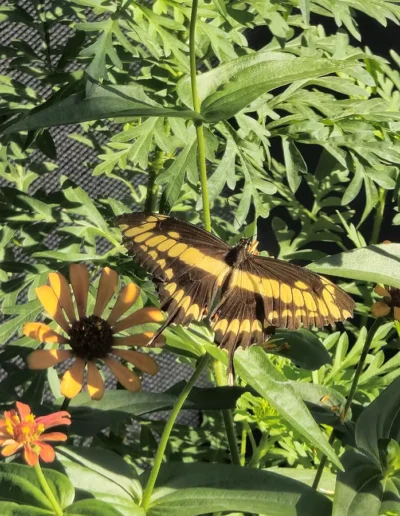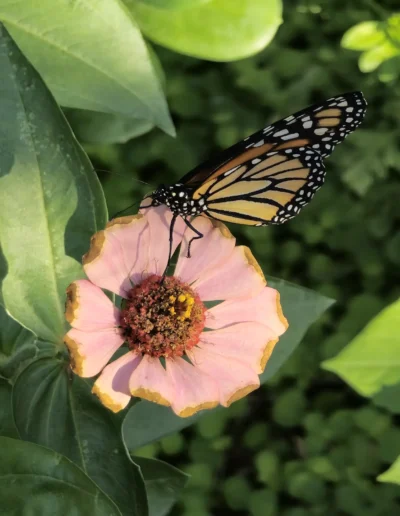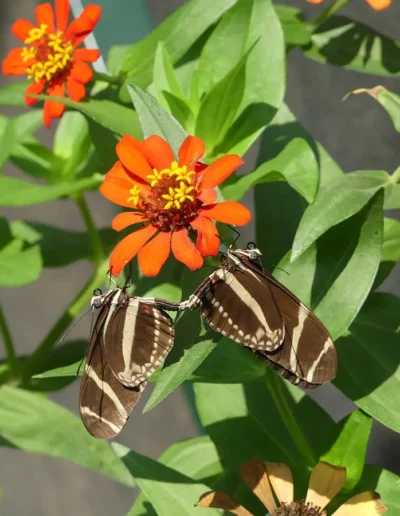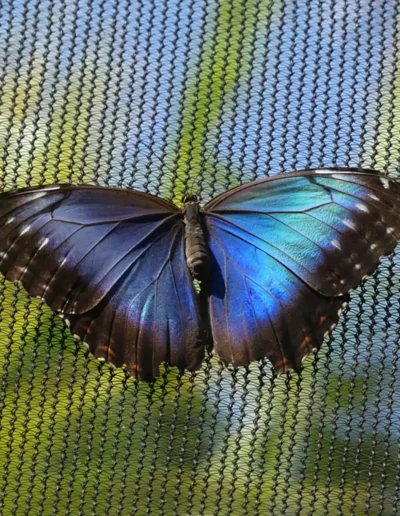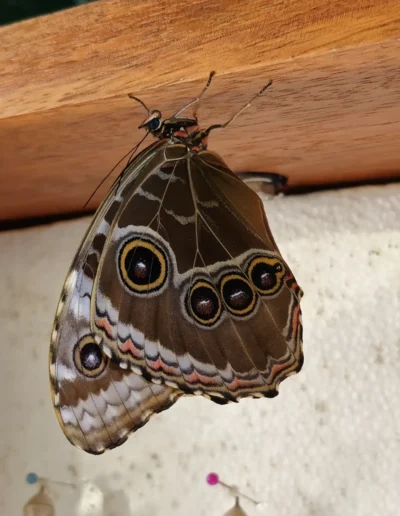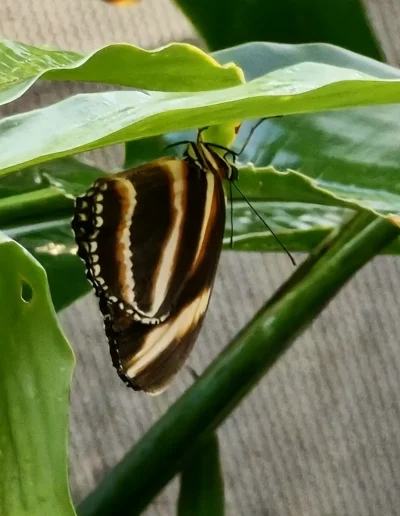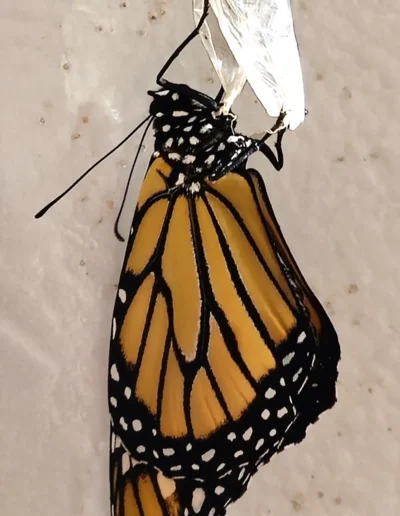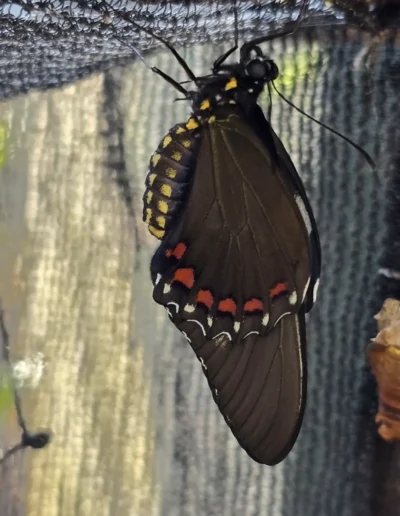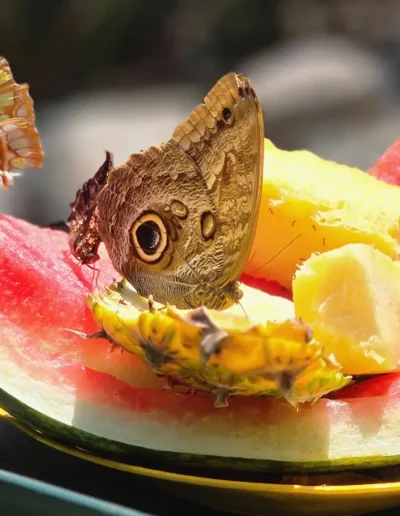
The life cycle of a butterfly
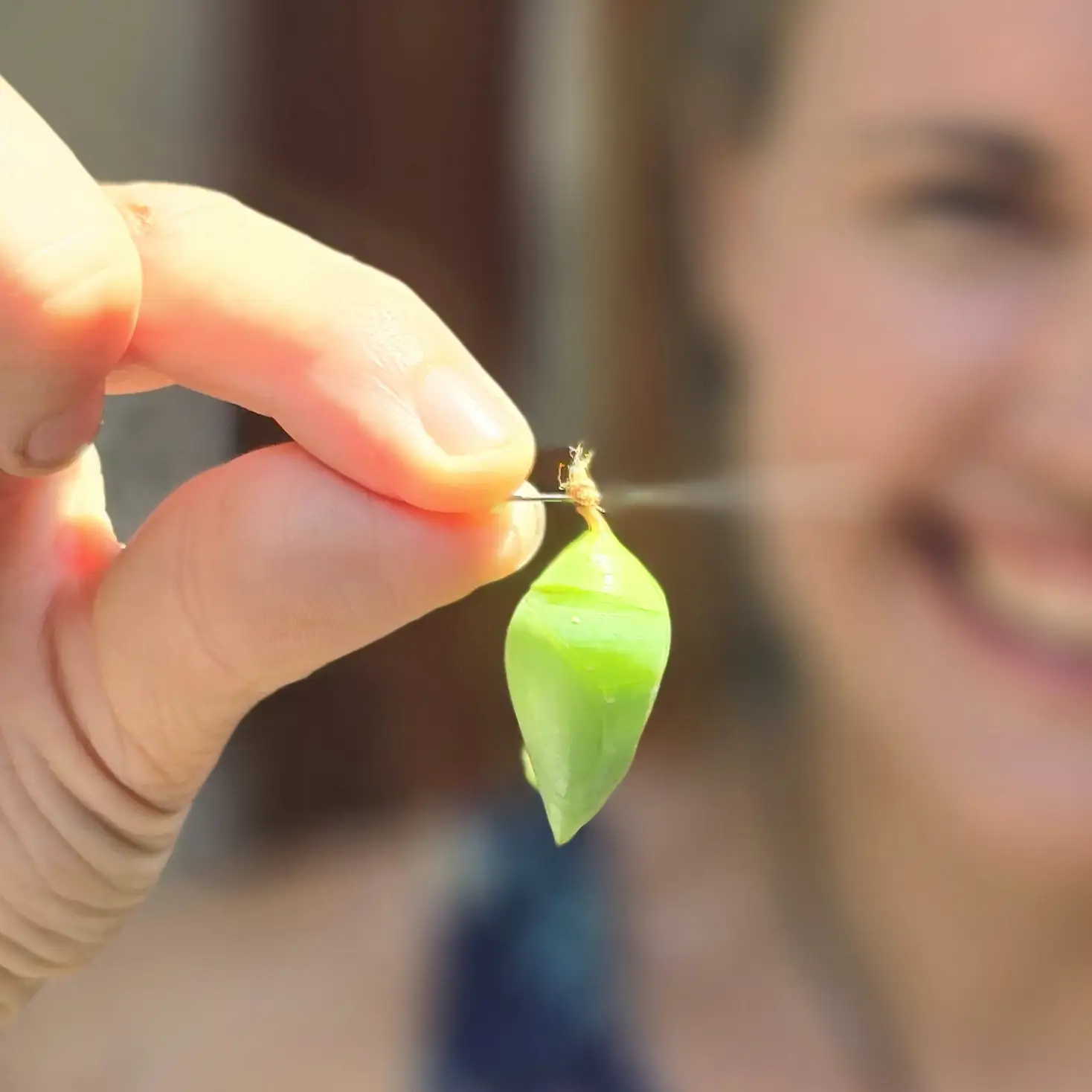
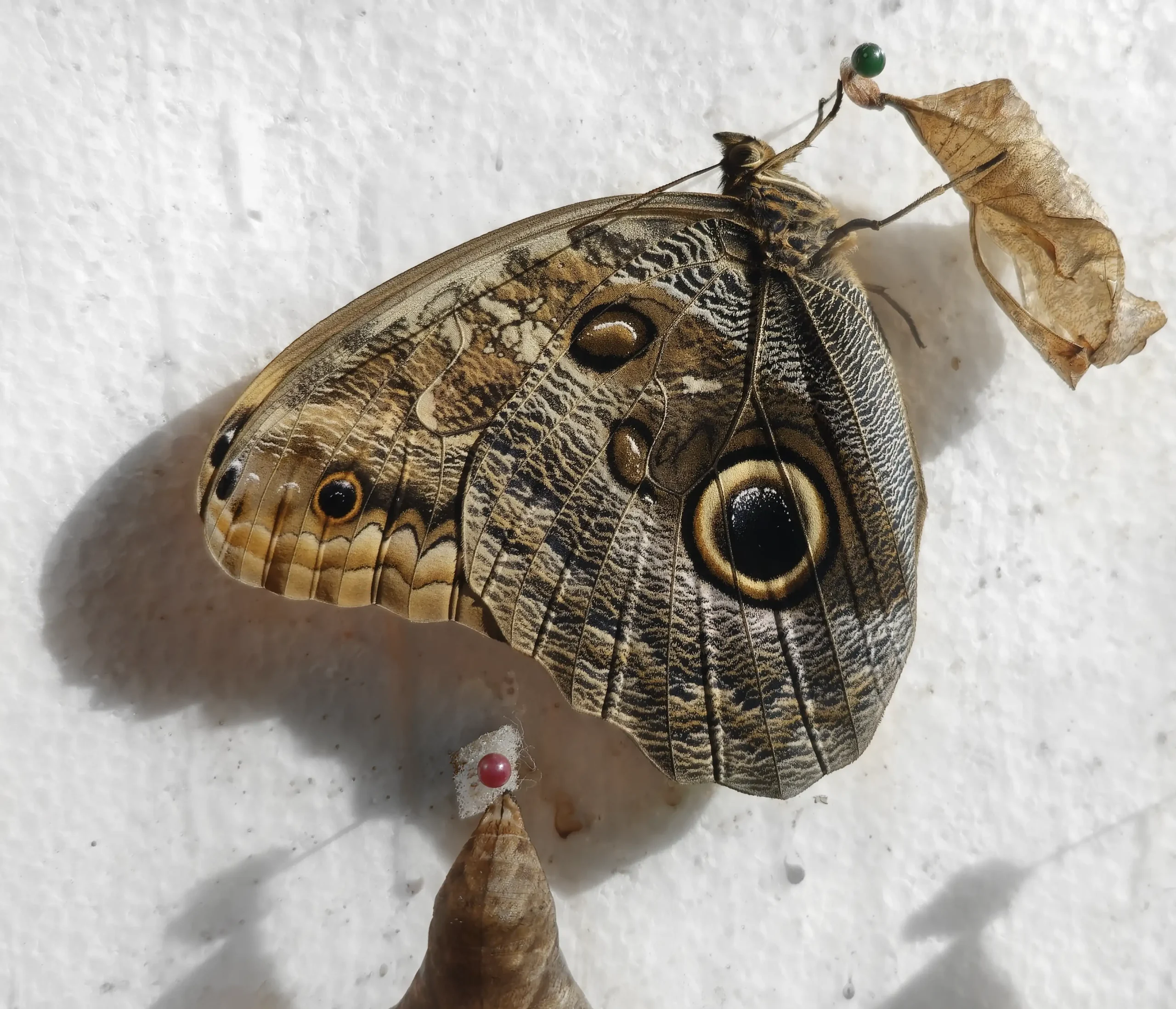
Once fully grown, the caterpillar forms a chrysalis, undergoing a complete transformation. Emerging as an adult butterfly, it displays vibrant wings and patterns for various functions such as camouflage or defense. The adult butterfly, now capable of flight, completes the life cycle by seeking mates and laying eggs to start the process anew.
The Giant Swallowtail Butterfly using its long proboscis to extract the sweet nectar from a flower, which provides it with essential nutrients.
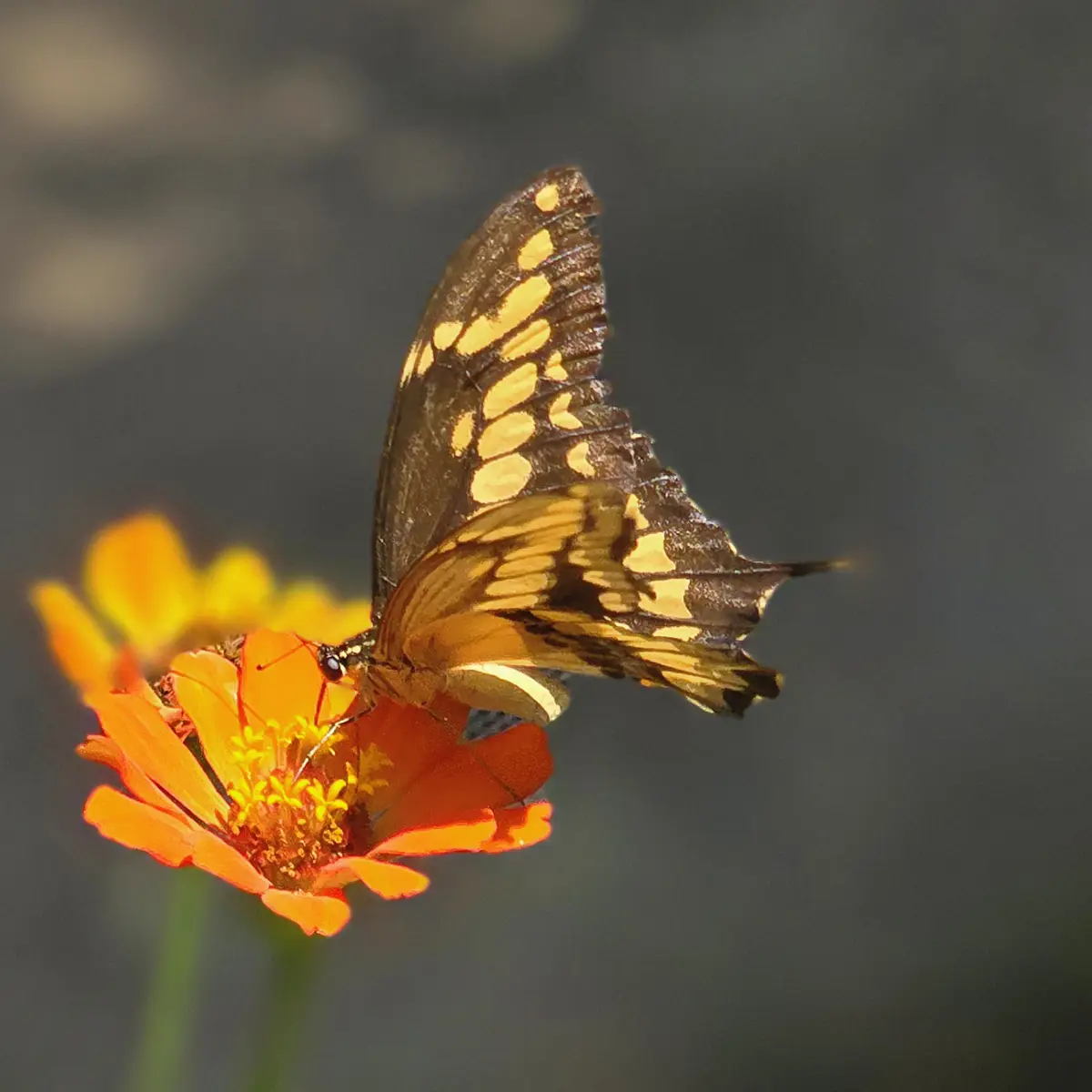
What To Look For
All of the photos and videos you see on this website, unless otherwise noted, were taken here on our property.
Heliconius charithonia, the zebra longwing or zebra heliconian, is a species of butterfly belonging to the subfamily Heliconiinae of the family Nymphalidae
Morpho achilles, the Achilles morpho, blue-banded morpho, or banded blue morpho, is a Neotropical butterfly.
The monarch butterfly or simply monarch (Danaus plexippus) is a milkweed butterfly (subfamily Danainae) in the family Nymphalidae. Other common names, depending on region, include milkweed, common tiger, wanderer, and black-veined brown.
Giant Swallowtail is a generally southern species that sometimes ranges as far north as Canada. The caterpillar closely resembles a large bird dropping, which would serve to deter birds and other predators
A Monarch butterfly, easily identifiable by its bright orange wings with black and white spots, is feeding on the flower’s nectar with its proboscis.
A pair of Zebra Longwing butterflies (Heliconius charithonia) on a vibrant orange flower. The Zebra Longwing butterflies are easily recognizable by their distinctive black and white horizontal stripes, which give them their name.
A Blue Morpho butterfly (Morpho menelaus) with its wings fully open. This butterfly is renowned for its iridescent blue wings, which are vividly displayed in the image. The upper side of its wings is a bright, metallic blue, which appears due to the microscopic scales that reflect light. The edges of the wings are dark brown with a few white spots near the tips.
The underside of Blue Morpho’s wings are brown with intricate patterns, including several eye-like spots that help deter predators. The body is black with a few red and white markings near the head, and the antennae are long and thin.
The only species in it’s entire genus, the Banded Orange Butterfly has several nicknames such as the Orange Tiger and Banded Orange Heliconian. Banded Orange Butterflies have been spotted in the wild sipping the tears of crocodiles for their salt.
The monarch butterfly letting it’s wings dry after hatching. You can see it hanging from the chrysalis it just hatched from. Typically they will rest for a few hours before they are ready for flight.
Polydamas Swallowtail (Battus polydamas). This species is recognizable by its dark wings adorned with distinctive colored markings.
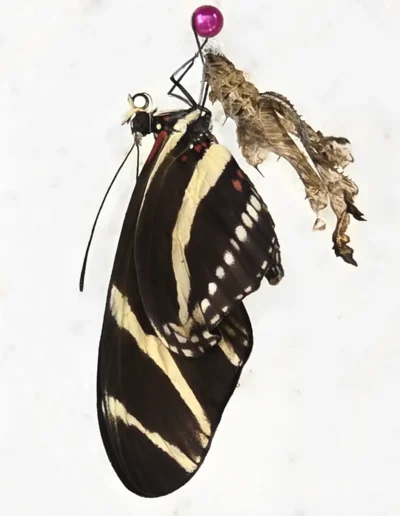
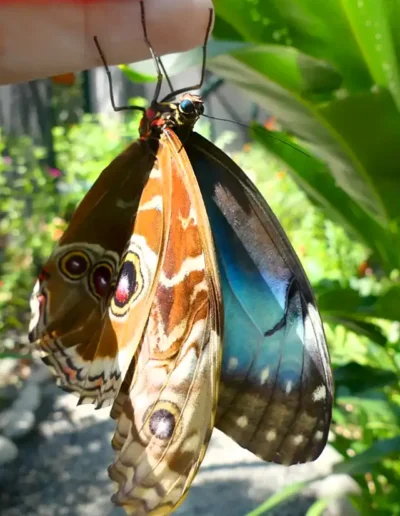
![The monarch butterfly or simply monarch (Danaus plexippus) is a milkweed butterfly (subfamily Danainae) in the family Nymphalidae.[6] Other common names, depending on region, include milkweed, common tiger, wanderer, and black-veined brown.](https://montezumagardens.com/wp-content/uploads/2024/06/20240229_071208-copy-1-400x516.webp)
